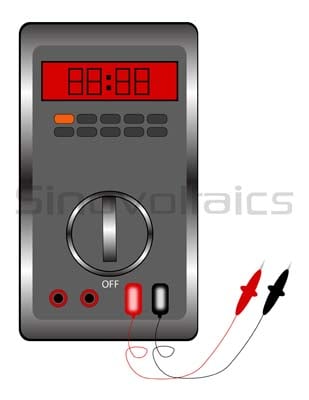Ampere (AMPS) and solar energy systems
Ampere, often referred to as amps, is the SI unit of electrical current. Its SI Unit symbol is A. SI stands for Système International d’Unités, or International System of Units. Ampere is one of the seven SI base units along with:
- Meter (for measurement of length)
- Kilogram (for measurement of mass)
- Second (for measurement of time)
- Kelvin (for measurement of temperature)
- Candela (for measurement of luminous intensity)
- Mole (for measurement of the amount of substance).
 Ampere
Ampere
All other SI units derived from a combination of two or more of the above base SI units. The International Bureau of Weights and Measures [1] defines Ampere as following: The ampere is that constant current which, if maintained in two straight parallel conductors of infinite length, of negligible circular cross-section, and placed 1 meter apart in vacuum, would produce between these conductors a force equal to 2 x 10−7 newton per meter of length.
Ampere in general sense
In general and practical sense, the measurement of the amount of electric charge passing a particular point in an electric circuit in a unit time is called ampere. If one coulomb of charge (6.214 X 1018 electrons) flows through a point in a circuit in one second, the current is said to be one ampere. Higher units of measuring current are kilo ampere (1kA = 1000 A) and mega ampere (1 MA = 1000 kA). Smaller units commonly used are milli-ampere(1 mA = 1/1000 A)
 Multimeter - used to measure Amps
Multimeter - used to measure Amps
Measurement of electric current
An ammeter can be used to measure the flow of current through an electric circuit. There are many types of ammeters available and the most common ones nowadays are the digital type meters. The ammeter is always connected in series (and never in parallel) to the circuit or to the branch of the circuit whose current is to be measured.
[1] This definition is extracted from the International Bureau of Weights and Measures (2006), the International System of Units (SI) (8th ed.), ISBN 92-822-2213-6
